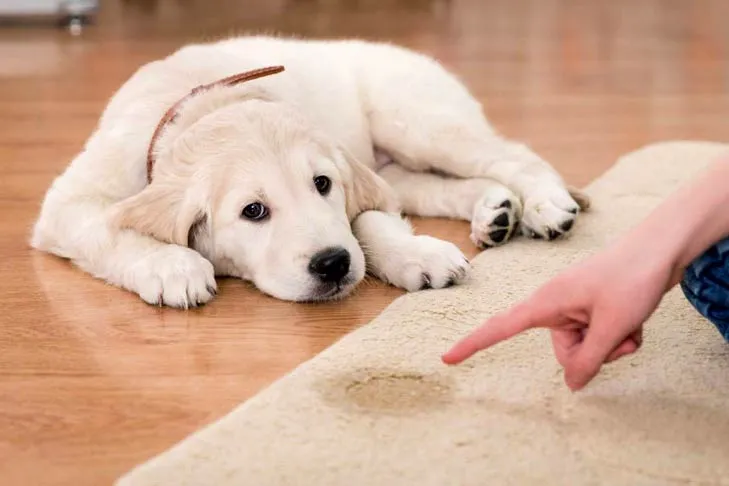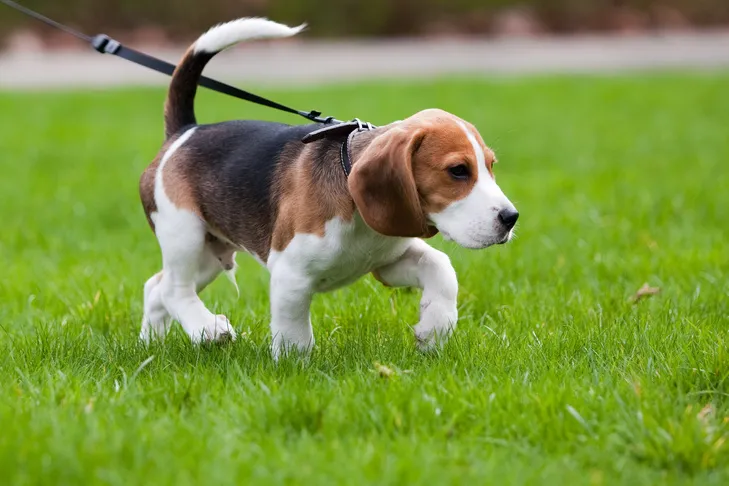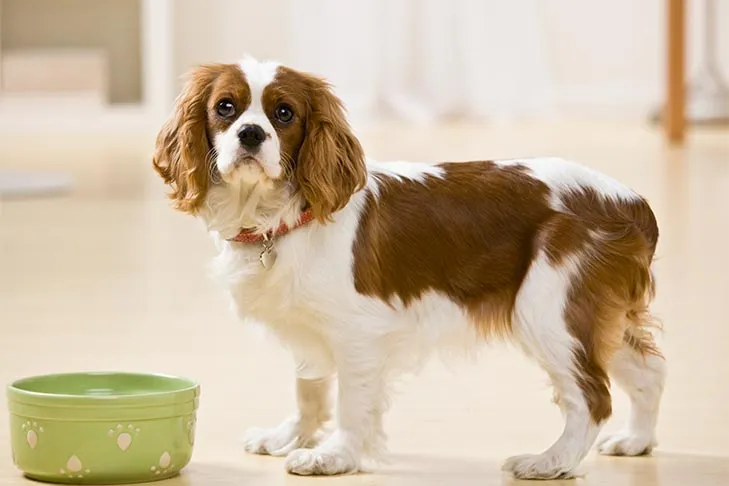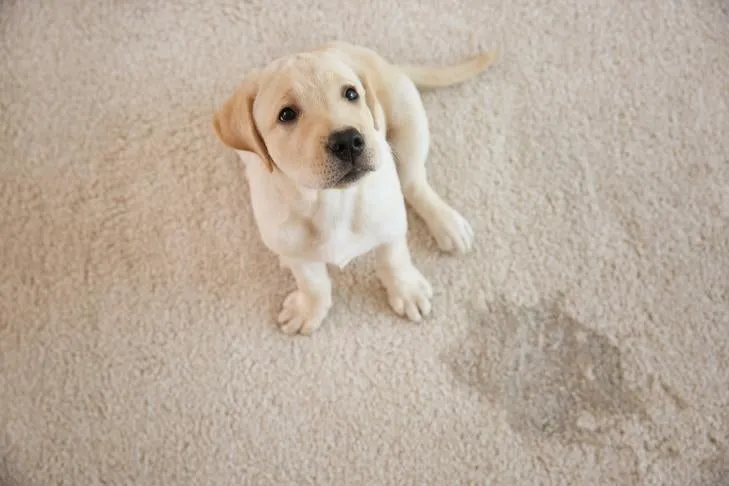Embarking on the journey of puppy parenthood is a fulfilling experience, one that often leads to a truly great dog story filled with joy and companionship. However, it also comes with its challenges, and among the first and most critical milestones is successful potty training. Many new puppy owners seek guidance from a “Best Puppy Potty Training Book” to navigate this essential process, aiming to establish good habits early for a harmonious life together. This comprehensive guide distills the proven methods and expert advice often found in top-rated training resources, providing you with a roadmap to effectively house train your new furry family member.
Why Potty Training is Crucial for a Happy Home
Potty training is not merely about keeping your house clean; it’s a foundational element of your puppy’s development and your relationship with them. Just as a comprehensive “best puppy potty training book” would emphasize, mastering housetraining provides your puppy with a clear understanding of boundaries and expectations, helps establish a predictable routine, and prevents the stress and frustration associated with indoor accidents. This crucial skill sets the stage for future obedience training and fosters a positive, trusting bond between you and your puppy, paving the way for a lifetime of happy memories.
Proven Methods: What Every Best Puppy Potty Training Book Recommends
Successfully house training a puppy relies on consistent application of tried-and-true methods. According to Dr. Mary Burch, Ph.D., director of the AKC’s Canine Good Citizen and S.T.A.R. Puppy programs, while various approaches exist, all can lead to success when fundamental principles are followed. These are the core strategies you’ll discover in any reputable “best puppy potty training book.”
Harnessing the Power of Crate Training
Crate training is widely endorsed by experts as one of the most effective potty training tools. Dogs are naturally den animals, seeking small, secure spaces for comfort and safety. A crate leverages this instinct, providing your puppy with a personal “cave.” The underlying principle for housetraining is a dog’s natural cleanliness; they are instinctively disinclined to soil their sleeping area.
It is paramount that the crate is the correct size – just large enough for your puppy to stand up, lie down, and turn around comfortably. If the crate is too spacious, your puppy might designate one corner as a potty area, defeating the purpose. Many crates come with adjustable partitions, allowing you to expand the space as your puppy grows. When your puppy needs to go, they will typically signal you by whining or scratching to be let out of their den. Ignoring these signals or allowing accidents in the crate can teach them that soiling their living space is acceptable, which can then translate to accidents elsewhere in your home.
 Golden Retriever Puppy Accident
Golden Retriever Puppy Accident
Puppy Pads and Paper Training: A Practical Alternative?
The use of puppy pads or paper training is often a debated topic in training circles, as noted in many puppy care resources. Dr. Burch points out that this method can sometimes reinforce two different options for a puppy, potentially prolonging the transition to outdoor-only elimination. The ideal scenario, as emphasized in the “best puppy potty training book” guides, is for puppies to learn to hold their bladder indoors and relieve themselves exclusively outside.
However, there are practical circumstances where puppy pads can be incredibly useful. This includes situations where an owner’s work schedule prevents frequent outdoor trips, or for tiny breeds living in regions with severe winter weather. Puppy pads offer an approved indoor spot for elimination, providing a temporary solution. Indoor dog potties are also available, even catering to male dogs. Once the puppy matures or circumstances change, owners can then focus on transitioning to outdoor-only potty breaks, a process that requires patience and consistent reinforcement.
Crafting Your Puppy’s Potty Training Schedule
Consistency is the cornerstone of successful housetraining, a point strongly advocated in every “best puppy potty training book.” Puppies have small bladders and undeveloped digestive systems, meaning they need to go often. Establishing and rigidly adhering to a schedule ensures your puppy has ample opportunities to relieve themselves in the designated outdoor area.
A general guideline suggests that puppies can typically hold their bladder for approximately one hour per month of age, up to around 9-12 months. For example, a 4-month-old puppy might hold it for about 4 hours. However, remember that all puppies are individuals, and this is a guideline, not a strict rule. Expect frequent trips, especially for very young puppies. You should plan to take your puppy out:
- First thing in the morning and last thing at night.
- Immediately after waking up from naps.
- After playing indoors or engaging in vigorous activity.
- Following meals, drinks, or chewing on toys/bones.
This commitment might mean taking your puppy outside a dozen or more times a day. If you work outside the home, arranging for a dog sitter trainer or a trusted neighbor to provide midday breaks is essential for maintaining consistency and preventing accidents. The faster you establish the idea of approved outdoor potty spots and off-limit indoor areas, the quicker you will move past the messy phase of puppyhood.
 Beagle puppy on leash walking in the grass.
Beagle puppy on leash walking in the grass.
Observing Your Puppy’s Unique Signals
A critical lesson from any “best puppy potty training book” is the importance of keen observation. Every puppy has individual signals and rhythms indicating their need to relieve themselves. Some puppies might hold it longer, while others might need to go out immediately after excitement or play. Some might even pause mid-play, pee, and then resume playing. Much like human infants, canine potty habits are highly individualistic, requiring you to learn your specific puppy’s cues through careful supervision. Watching for signs like sniffing, circling, or suddenly leaving the room can give you precious seconds to get them outside before an accident occurs.
The Role of Diet in Successful Housetraining
The food your puppy eats and their feeding schedule play a significant role in their potty training journey. Puppies have immature digestive systems, making it difficult for them to handle large quantities of food. Most “best puppy potty training book” guides recommend breaking your puppy’s daily food intake into three small, regular meals. The quality of the puppy food is also paramount; opt for a high-quality formula that agrees with your puppy’s system.
Regularly examining your dog’s stool is the best way to monitor their digestive health and determine if a diet change is needed. If your puppy consistently produces bulky, loose, or unusually odorous stools, it’s wise to consult your veterinarian. They might suggest switching to a new dog food gradually. Overfeeding can also lead to diarrhea, which will undoubtedly complicate and prolong the housetraining process.
 Cavalier King Charles Spaniel standing next to its food bowl at home.
Cavalier King Charles Spaniel standing next to its food bowl at home.
Reinforcing Positive Behavior: The Golden Rule from Any Best Puppy Potty Training Book
Positive reinforcement is arguably the most powerful tool in your training arsenal, a principle strongly advocated across all “best puppy potty training book” resources. Scolding a puppy, especially after an accident has occurred, is largely ineffective and can instill fear rather than understanding. Instead, focus on celebrating and rewarding desired behaviors.
When your puppy successfully eliminates outside, be effusive with your praise! Cheer, clap, offer their favorite small, digestible treats, and provide plenty of loving attention. Make it clear that this accomplishment is incredibly important. This positive association helps your puppy understand that going potty outdoors is a highly rewarding experience, encouraging them to repeat the behavior. If an accident happens indoors, remain calm. Clean the mess thoroughly with an enzymatic cleaner to eliminate odors, preventing your puppy from being drawn back to the same spot by scent. If you catch your puppy in the act of squatting, immediately pick them up and rush them outside, praising them if they finish their business in the correct location. Remember, prevention and positive reinforcement are the cornerstones of successful housetraining.
 Puppy being trained in the grass, rewarded with a treat.
Puppy being trained in the grass, rewarded with a treat.
Troubleshooting Common Potty Training Challenges
Even with the most diligently followed advice from a “best puppy potty training book,” challenges can arise. It’s important to recognize that sometimes, house soiling may indicate an underlying physical issue. Dr. Burch advises that if a puppy seems impossible to housetrain beyond several months of age, a veterinary check-up is crucial to rule out health problems. If your vet confirms your puppy is healthy, the next step might be to consult a professional trainer or behaviorist experienced with such issues.
Here are some common problems and solutions:
Dealing with Frequent Indoor Accidents (Piddling)
This issue is particularly common with Toy breeds. For these smaller dogs, some trainers suggest teaching them to use indoor potty spots, similar to a cat’s litter box. In addition to puppy pads, dedicated indoor dog potty boxes are available. With consistent training, even tiny dogs can be successfully housetrained, though it may require a bit more time, attention, and effort compared to larger breeds.
Eliminating Repeat Accident Spots
If your puppy repeatedly has accidents in the same indoor location, it’s likely due to inadequate cleaning. The scent of previous elimination can linger, signaling to your dog that it’s an appropriate potty spot. Your new puppy supply kit should include plenty of pet stain enzymatic cleaners. Carefully follow the product instructions to thoroughly remove all traces of odor and stain, breaking the cycle of repeat accidents.
 Yellow Labrador retriever puppy sitting on carpet at home next to a pee accident.
Yellow Labrador retriever puppy sitting on carpet at home next to a pee accident.
The Danger of Too Much Freedom Too Soon
A common mistake new dog owners make is granting their puppy too much freedom too quickly. Seeing early signs of success can lead to prematurely declaring victory. Even when your puppy seems to be grasping the concept, maintain a strict schedule and supervision to ensure good habits are deeply ingrained. Giving a puppy the run of the house before they are reliably housetrained is an open invitation for accidents. The dedication required for successful potty training is akin to the commitment needed to start my own dog walking business—it’s a marathon, not a sprint, and patience is key.
When Crates Become Soiled
If your puppy soils their crate, it can be particularly disheartening. This issue is often seen with rescued dogs who may have been confined for long periods and had no choice but to eliminate in their kennels. In such cases, the best approach is to return to the fundamentals of crate and house training:
- Assess your dog’s bladder and bowel control when they are outside the crate.
- Strictly control their diet and feeding schedule.
- Offer frequent trips outside, especially after meals, first thing in the morning, and last thing at night.
- If you are away for extended periods, arrange for a dog walker or trusted friend to let your dog out. Understanding how a professional handles many dogs, such as in a dog walking startup, can provide insights into managing a consistent schedule.
- Always clean accidents thoroughly with an enzymatic cleaner to remove all odors.
How Long Does Potty Training Really Take?
The duration of puppy potty training can vary significantly, as highlighted in numerous “best puppy potty training book” discussions. Dr. Burch notes that factors such as the puppy’s age, past learning experiences, your chosen methods, and your consistency all play a role. An 8-week-old puppy, still in early developmental stages, will progress differently than a 5-month-old puppy. While some puppies might achieve perfect potty manners in just a few days, others, particularly those from less-than-ideal circumstances, might take several months.
With unwavering patience, persistence, and the consistent application of these proven strategies, most dogs will eventually learn successful housetraining. The effort you invest now will lay the groundwork for a clean, happy, and well-adjusted life with your beloved companion.
By adhering to the principles outlined here, often found within the pages of the “best puppy potty training book” guides, you are well-equipped to guide your puppy through this vital training phase successfully. Explore more of our expert articles on puppy care to continue building a strong foundation for your dog’s well-being and happiness!
